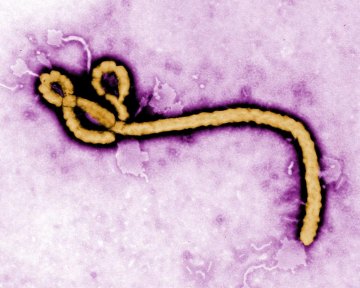
Epidemiologists in Sierra Leone and Liberia were working with other agencies, including Doctors without Borders and the U.S. Centers for Disease Control and Prevention (CDC), to produce realistic estimates, according to a WHO news release.
But even as health officials were again sounding the warning about the spread of this illness in Africa, the CDC announced that two Americans hospitalized with Ebola--a doctor and relief worker--had recovered.
The Ebola virus is considered one of the world’s most virulent diseases. The infection is transmitted by direct contact with the blood, body fluids and tissues of infected animals or people, according to WHO. As of Aug. 22, the organization reported 1,427 deaths in the African nations of Sierra Leone, Liberia, Guinea and Nigeria.
So why do health officials believe the problem is actually underestimated? Here are four reasons:
1. Families are hiding infected loved ones.
“As Ebola has no cure, some believe infected loved ones will be more comfortable dying at home,” according to WHO. Others believe an isolation ward is an incubator of the disease and will lead to infection and certain death, the organization’s news release said. On top of that, many fear the stigma that comes with confirmation of a diagnosis.
2. Treatment centers and clinics have closed. Frightened medical staff and patients have fled.
Hospitals still in business are overwhelmed. “Quantities of staff, supplies and equipment, including personal protective equipment, cannot keep up with the need,” the report said.
3. In some cases, residents aren’t getting clear signals from authorities.
In West Point township, described by WHO as “Liberia’s most disease-prone slum,” rumors spread that a holding facility in an abandoned schoolhouse was a general health care clinic.
Residents of other communities brought sick family members to the facility, “where they were housed together with suspected Ebola patients,” WHO recounted. “The presence of patients from these other communities was resented by the West Point community, and this resentment contributed to the riot and subsequent looting, in which potentially contaminated materials were carried into these communities.”
4. Officials simply don’t know about all of the victims.
As put by WHO: “In rural villages, corpses are buried without notifying health officials and with no investigation of the cause of death. In some instances, epidemiologists have traveled to villages and counted the number of fresh graves as a crude indicator of suspected cases.”
WHO describes numerous shadow-zones -- villages in which officials believe sickness and death have been caused by Ebola. The cases are not investigated because of community resistance or lack of staff.
Related:
Ebola: History's latest plague upon our houses
5 things to know about the Ebola virus